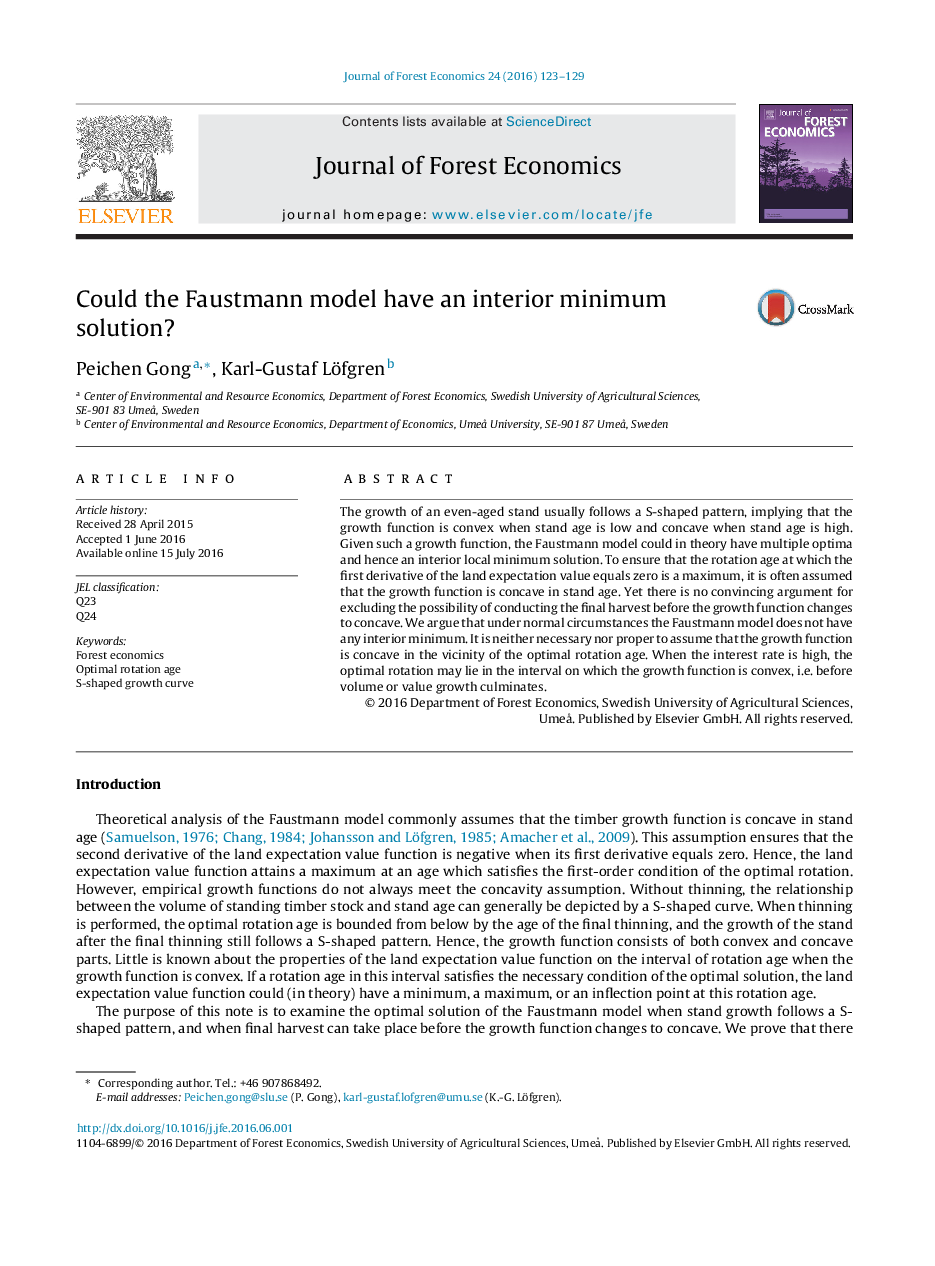| Article ID | Journal | Published Year | Pages | File Type |
|---|---|---|---|---|
| 6545175 | Journal of Forest Economics | 2016 | 7 Pages |
Abstract
The growth of an even-aged stand usually follows a S-shaped pattern, implying that the growth function is convex when stand age is low and concave when stand age is high. Given such a growth function, the Faustmann model could in theory have multiple optima and hence an interior local minimum solution. To ensure that the rotation age at which the first derivative of the land expectation value equals zero is a maximum, it is often assumed that the growth function is concave in stand age. Yet there is no convincing argument for excluding the possibility of conducting the final harvest before the growth function changes to concave. We argue that under normal circumstances the Faustmann model does not have any interior minimum. It is neither necessary nor proper to assume that the growth function is concave in the vicinity of the optimal rotation age. When the interest rate is high, the optimal rotation may lie in the interval on which the growth function is convex, i.e. before volume or value growth culminates.
Related Topics
Life Sciences
Agricultural and Biological Sciences
Agronomy and Crop Science
Authors
Peichen Gong, Karl-Gustaf Löfgren,
